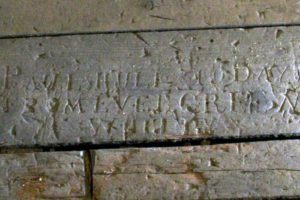PAUL, Christopher (ca 1825 – ?)
Biography
Christopher Paul was probably born in Hull, England, in 1825 or in 1828. His family is unknown and he may have been an orphan. As a youth, he became a sailor, making his first trip at the age of 15 or 16.
In May 1850, Paul arrived in Quebec City from London, aboard the ship Evergreen, whose captain was Benjamin Pearson. Evergreen had come to Quebec City to load a cargo of wood, just like hundreds of other transatlantic vessels each year. As was also very common in Quebec City, ten sailors from Evergreen, including Paul, refused to work, claiming they had not been paid. This being contrary to the employment contracts they had signed, Pearson complained to the local criminal justice system, which regularly dealt with these types of cases. The ten sailors were arrested by the police and brought before the local police magistrate, William King McCord. McCord sentenced three of them to twenty days in prison, while the others, including Paul, agreed to return to work. The next day, however, Paul and another sailor, Patrick Lynes, still refused to work. Pearson again had them arrested and brought before King. Since this was their second offence, he sentenced them to 40 days in prison.
So far, there is little of note in this tale, which is very similar to that of thousands of other sailors convicted of breach of contract and locked up in the Quebec common gaol. However, once in prison, Paul was imprisoned in one of the old cells formerly used for prisoners sentenced to death. This was possibly as a punishment for disobeying the prison rules, or was perhaps a temporary measure resulting from the regular overcrowding of the prison during the shipping season. Whatever the reason, Paul carefully carved an elegant inscription into the floor-boards of his dark, damp cell:
Paul Hull 40 days
from Evergreen
Whitby
This graffiti, which still survives today, is a very tangible trace of a life otherwise lost in the flood of history, the only one of its kind that we know of from that time in Quebec City. More than 150 years later, it has allowed Christopher Paul to step briefly out of the shadows of history.
In the end, Paul did not serve his full sentence. He was released after a month, just in time to join Evergreen on its return journey to London. It was likely Pearson who asked for his release, so as not to lose the labour of his seaman. The port of Quebec suffered major labour shortages, and some captains even went so far as to poach sailors from other ships. Two of Paul’s colleagues, also Evergreen sailors, were luckier than him: they escaped from prison and were never seen again.
Much remains unknown about Paul’s life. In the prison register, he is described as having been born in Lower Canada, in 1824 or 1825, and the same information turns up on a seaman’s ticket issued in his name in England in 1846. This was probably an attempt to hide his identity, because on another ticket issued in his name in 1845, with a very similar physical description, he was said to have been born in Hull in 1828. Furthermore, it remains a mystery as to why he included the name Whitby in his graffiti, which was another port not far from his hometown of Hull.
In 1851, Paul was back in England, living in Sunderland, another port city in northeast England. He made other trips up until 1855, and then we lose track of him. His later life is unknown.
– Donald Fyson, June 2015
Images
Bibliography
Primary sources
- Bibliothèque et Archives nationales du Québec, «Le fichier des prisonniers des prisons de Québec au 19e siècle», <http://www.banq.qc.ca/archives/genealogie_histoire_familiale/ressources/bd/instr_prisons/prisonniers/index.html> (transcription of the Quebec common gaol registers, the originals of which are in Bibliothèque et Archives nationales du Québec, Centre de Québec, E17,S1).
- Bibliothèque et Archives nationales du Québec, TL31,S1,SS1 #s 94399, 94400, 96041 et 96042.
Secondary sources
- Fyson, Donald. “Prisoners’ Graffiti, Quebec City Common Gaol” (2013). The Identity of English-speaking Quebec in 100 Objects <http://100objects.qahn.org./content/prisoners-graffiti-quebec-city-common-gaol>.
- Fyson, Donald. “Prison Reform and Prison Society: The Quebec Gaol, 1812-1867”. In Louisa Blair, Patrick Donovan and Donald Fyson, From Iron Bars to Bookshelves: A History of the Morrin Centre (Montreal: Baraka Books, forthcoming).
